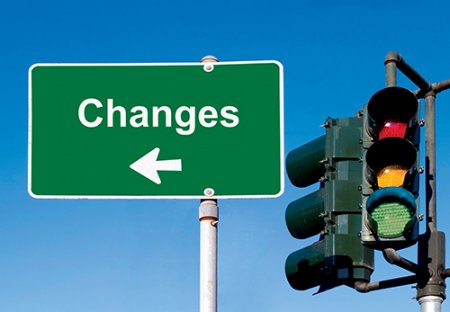On Election Eve, Reading the Transpo Tea Leaves

Though we found plenty of fodder this election season, transportation policy never emerged as a consistent talking point in the presidential race. This is more than a little surprising, considering the sad state of American infrastructure and the importance of same to this country’s economic and strategic well-being. Then again, what kind of dialogue can we expect when one side’s position can essentially be summed up in three words, two of which are "drill."
On this election eve, we turn to an unexpected source for a sober summation of the future of transport under either a McCain or Obama administration: the Pacific Shipper, "the Essential Transpacific News Weekly." In an insider-y feature story posted today, the Shipper susses out some of the main policy differences between the two candidates, from highways to waterways, and finds electeds and experts who think each is in for a rude awakening when it comes to funding.
Perhaps more than any national campaign in recent history, the major
candidates have staked out very clear and decidedly different stances
on transportation infrastructure investment.McCain has made criticism of earmarks something of a crusade in his
campaign, and says he wants to send more decisions on spending
priorities to the states.“I believe that a higher share of the taxes collected at the gas
pump should go back to the state where those taxes were paid,” the
Arizona Republican told the American Automobile Association, “and I’ve co-sponsored legislation that
would allow states to keep almost all of their gas tax revenues for
their own transportation projects without interference from
Washington.”“We’ve got a problem,” Mortimer Downey, a former deputy secretary of
transportation in the Clinton administration and an adviser to the
Obama campaign, told a public forum in Washington last week on
transportation policy. “Infrastructure needs more investment. It is
important, it is crumbling, and other countries are doing more than we
are. We’ve got national issues we need to deal with, and transportation
is the critical tool for doing that.”He said the Obama camp has “a vision” for the next highway bill. “It
should be a much better bill than the last couple. It shouldn’t have so
many earmarks in it,” Downey said.At the same forum, Douglas Holtz-Eakin, chief economic adviser to
the McCain campaign, said the spending priorities are critical. “There
is no area where earmarking has been more visible than in highway
bills. We have to get more bang for the buck.”Downey said the economy will make transportation programs more
important. Obama favors, he said, “an economic recovery measure that
would have infrastructure and get people working on, hopefully, small
projects that would roll out quickly.”
After the jump, the Shipper looks at how the next admin might try to finance the 2009 federal funding package, and what the US Department of Transportation could look like under each.
How either administration would pay for a highway bill remains an open question.
Obama has endorsed a $60 billion National Infrastructure Bank to invest in projects of a national priority.
McCain dismisses that idea. “The notion that there is a need for an
infrastructure bank is not something the senator supports,” Holtz-Eakin
said. He called the plan “reminiscent of Fannie Mae and Freddie Mac.”At the agency level, industry observers believe the two would offer starkly different approaches to regulation.
Industry officials believe an Obama White House would work closely
with the Democratic Congress on such agency-level issues, and a strong
majority in the Senate would clear the way for broader actions in areas
such as “card check” legislation to make it easier for labor unions to
organize workers.A McCain Department of Transportation, meanwhile, likely would look much like the last eight years under President Bush.
“I think a McCain DOT is going to be very similar to what we have
now,” said the U.S. Chamber’s Kavinoky. “There has been speculation
about Mary Peters staying on as DOT secretary. In that case, I think
you would see a lot of consistency between a Bush and a McCain
administration.”“An Obama administration is starting over; they have to put all new
people in place, develop reauthorization proposals, that could delay
the process,” she said. “It’s not an easy task to develop legislative
concepts that could get through (the Office of Management and Budget).”
And who would head up the next USDOT? The Shipper mentions Downey and Federal Aviation Administrator Jane Garvey as possibilities. Mary Peters tops the list of prospects under McCain, according to Congressional Quarterly, which also names Garvey as a potential Obama pick. A Politico piece picked up by Bike Portland says Reps. Earl Blumenauer and Jim Oberstar have been short-listed by Obama. And though we’d hate to lose her, New Yorkers have our local favorite.
Regardless of how little time the campaigns have devoted to the issue while on the trail, it will undoubtedly loom large for the next occupant of the White House, one way or another.
Graphic: Pacific Shipper